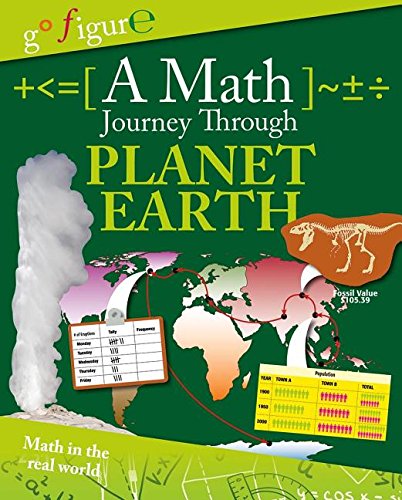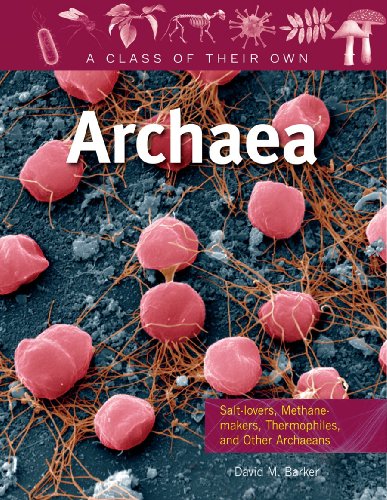-
The Ninjabread Man
Katrina Charman
Paperback (Crabtree Publishing Company, Feb. 1, 2016)In a terrific twist on the original tale of The Gingerbread Man, follow the amazing Ninjabread Man as he dips and dives out of danger! N
N
-
Bacteria: Staph, Strep, Clostridium, and Other Bacteria
Judy Wearing
Paperback (Crabtree Publishing Company, Feb. 1, 2010)Bacteria are microscopic organisms with a cell structure that is very different from that of the other kingdoms. Traditionally classified according to their shape, scientists now use DNA studies to refine the groupings of bacteria. This book examines bacteria that are found in virtually every environmentincluding those that are characterized by extreme heat, cold, and depthand, of course, bacteria that are found inside our bodies. Intriguing information highlights the key role that bacteria play in shaping the ecology of our planet, how some bacteria make their own food while others feed on ready-made food, and how some do indeed cause disease, while most do not. Case studies examine the development of new vaccines against bacterial diseases and the use of bacteria to help fight pollution. R
R
-
Community Helpers from A to Z
Bobbie Kalman
Paperback (Crabtree Publishing Company, Oct. 1, 1997)Lavishly illustrated with artwork and amazing photographs, Alphabasics are a combination of ABC books and picture dictionaries. Each book names an object for each letter and gives fascinating information on topics that are fresh and appealing to children.-- an entire page explores one subject and its related topics-- lavish illustrations and photographs help provide further information-- entertaining and informative factsLet's meet people who make our communities cleaner, safer, more pleasant places to live. Full-color photographs and illustrations with informative captions feature workers performing tasks related to their occupations putting their various roles into a context children will recognize. This alphabet book introduces young readers to a range of community helpers including: -- agricultural workers-- firefighters-- recycling workers-- veterinarians, and more! T
T
-
Center Court: The History of Basketball
Jaime Winters
Paperback (Crabtree Publishing Company, Sept. 15, 2015)Do you know who invented basketball? Who won the first NBA championship? When did the WNBA start? Find the answers to these questions and more in this jam-packed title. Fascinating fact boxes and clearly written text chronicle the historic triumphs and challenges of a favorite American sport thats now played worldwide. P
P
-
Life in the Ancient Indus River Valley
Hazel Richardson
Paperback (Crabtree Publishing Company, March 1, 2005)This book is intended for ages 8-14. The Indus River Valley was once home to thriving communities of peoples who worked the land now known as Pakistan. Some of the world's oldest civilisations, including the Harappans and the Maurya and Gupta empires, grew in this fertile region. This beautiful new book, beautifully documents the lives of these remarkable people from long ago. The topics include: farming innovations that helped support larger populations; the arrival of Hinduism and Buddhism; daily life in a Harappan village; the development of the caste system; early language and writing; and the arrival of the White Huns. U
U
-
What Are Light Waves?
Robin Johnson
Paperback (Crabtree Publishing Company, Feb. 28, 2014)"This engaging title introduces readers to the science of light waves. Relatable examples, accessible text, and a creative design challenge help readers discover the properties of light waves and their essential role in seeing our world"-- O
O
-
What Is Motion?
Natalie Hyde
Paperback (Crabtree Publishing Company, Feb. 28, 2014)Motion is a change in an objects position. This fascinating title explains in a clear, simple way how objects are moved by a change in energy. Simple activities show young readers how energy is changed by applying a force, either by coming in contact with an object or by a force that does not touch it physically, like gravity. O
O
-
What Is Pollination?
Bobbie Kalman
Paperback (Crabtree Publishing Company, Oct. 1, 2010)Pollination by insects is a critical function of all land ecosystems. Most orchard fruits, vegetables, and some field crops are pollinated by insects. This book features photographs that focus on the critical fact that protecting pollinators means having food to eat. It helps children look at insects in a different way. N
N
-
Coral Reef Food Chains
Bobbie Kalman, Kelley MacAulay
Paperback (Crabtree Publishing Company, March 15, 2005)Intended for ages 5-9, this book takes readers on an exciting underwater journey to one of the world's most fascinating habitats. Stunning photographs and detailed illustrations help show: the relationships between the plants, herbivores, carnivores, and omnivores that live in and around the reef; the dangers to these fragile habitats; why coral reefs are described as the rainforests of the sea. T
T
-
Life in a Longhouse Village
Bobbie Kalman
Paperback (Crabtree Publishing Company, March 30, 2001)Children's author Bobbie Kalman's new series Native Nations of North America is an ongoing series that looks at the lives of the indigenous peoples of North America before the land was divided into the countries of the United States and Canada. The books focus on geographical areas, language groups, important historical events, as well as village life and homes. Some of the books also explain the impact Europeans had on the lives of native peoples. Every step of the research, writing, and editing process has involved native writers and consultants and has been meticulously checked for cultural sensitivities -- and, of course, Bobbie Kalman has put her teaching expertise to work on each book.The people who lived in the northeastern woodlands belonged to many nations and spoke many languages. This region's two major language groups were Iroquoian and Algonkian. Some of the nations were friends, and some were not, but they all shared a common way of life -- life in a Longhouse Village. All these nations lived in permanent homes and grew crops. They all belonged to clans and each longhouse was the home of a clan. Children will learn about the fascinating lifestyle of these hunting and farming peoples who thanked the Earth each day for its many gifts.Topics include: -- clan and village life-- how a longhouse was built-- life inside the longhouse-- gifts from the land-- making clothes from hide-- the roles of men, women, children and elders-- games and celebrations P
P
-
A Math Journey Through Planet Earth
Anne Rooney
Paperback (Crabtree Publishing Company, Sept. 19, 2014)"Fun pictograms and infographics about planet Earth make learning about math topics such as volume, scale diagrams, division, and number lines easy and fun. In this book, readers go on a mission to protect threatened areas around the world and use their mathematical skills to measure geysers, protect forests, and check on glaciers. Math puzzles and exercises help children build confidence in their math skills."-- T
T
-
Archaea: Salt-Lovers, Methane-Makers, Thermophiles, and Other Archaeans
David M Barker
Paperback (Crabtree Publishing Company, Feb. 1, 2010)Some Archaea thrive in extreme places around the planet such as in thermal pools, hot vents at the bottom of the sea, extremely salty water, and even in underground oil reserves. Others are found in the intestines of animals and in plankton, tiny organisms that form a feeding reserve for larger marine life. Once grouped with bacteria, the DNA of this fascinating group is sufficiently different that scientists have proposed that they should have a sixth kingdom of their own. This book examines the three main divisions into which members of the diverse Archaea kingdom are grouped according to their unusual biology. It also explains why little in general is known about them, and why further classification of Archaea is so difficult. R
R